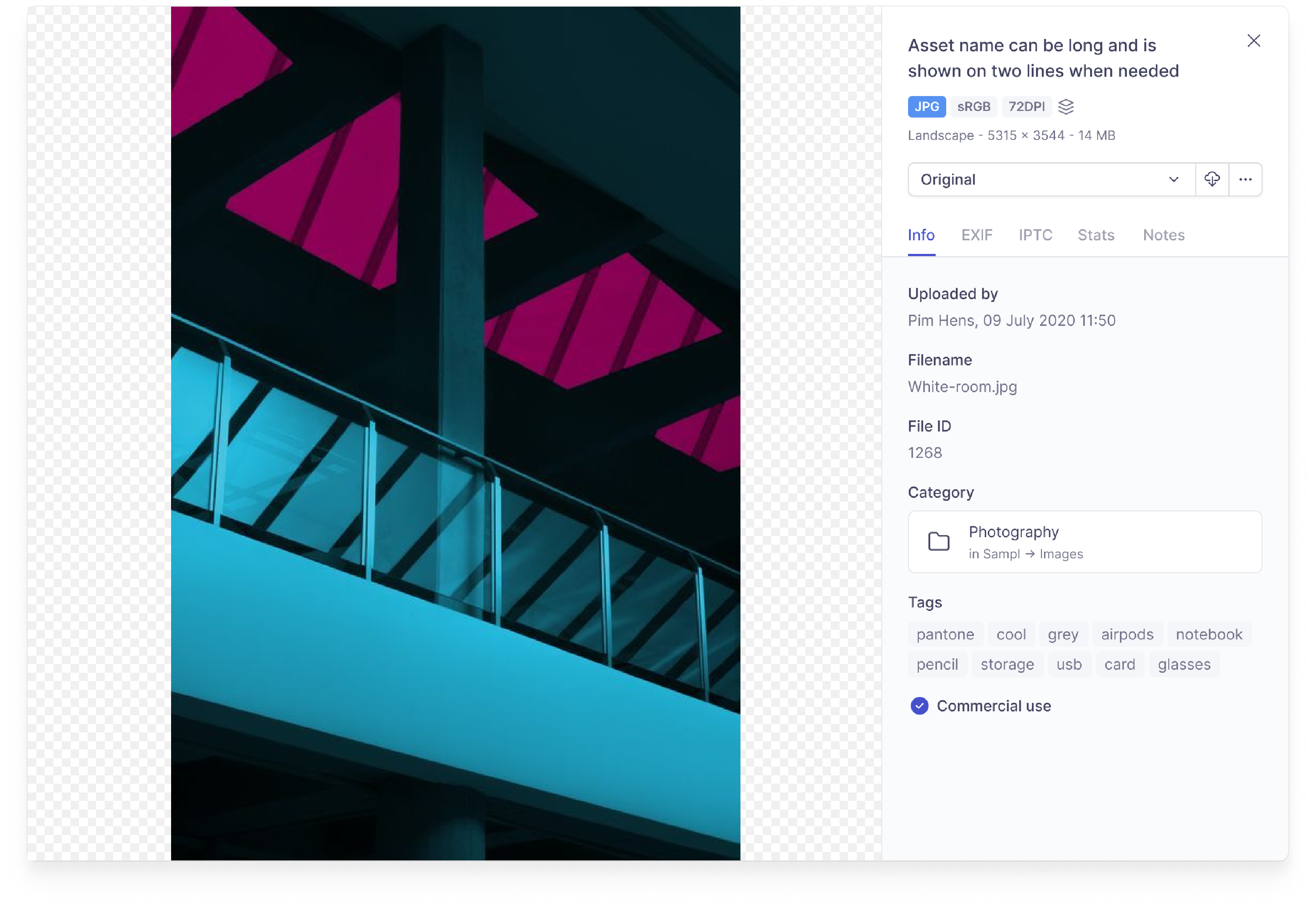Metadata
Kadanza has a powerful and flexible metadata management system. Some metadata, like file type, colorspace, or resolution, is shown below the asset's thumbnail.

Other metadata can be seen when opening an asset in detail view.

While uploading or editing assets, users are allowed to add or change metadata. Metadata, if used correctly, can help you organize your assets. Most metadata is also searchable to locate your desired asset even faster. Users can search all metadata by using the general search bar or using the advanced search function.
Adding metadata
Enrich your uploaded assets by adding metadata. By default, we recommend doing this asset per asset because it gives you a better overview of what you’re doing. It can also be done in bulk when you have multiple assets that need the same metadata values.
All the metadata tied to an asset is searchable, so the more you enrich your assetsthe easier it is to locate them later on.
By clicking the context menu below an asset thumbnail and select Edit, you can change all of the available metadata. Once open, the Edit asset modal looks something like this:

Preview panel
Below the preview, users can
- Upload a custom preview image (convenient for files that don't have a preview, like ZIP files)
- Select the correct colorspace
- Set file properties such as spot colors, transparent background, or vector file.
File info
This part of the Edit asset modal is the most advanced and can include many attributes depending on the metadata scheme created by the admin(s). By default, we always have a standard set of metadata attributes, but custom schemes can also be created by adding custom attributes. All of the available fields can be edited in this modal. We have also mapped the most common IPTC metadata to our default metadata.
Adding disclaimer as metadata
For certain businesses, having disclaimers and warnings when downloading assets is crucial. This is because some images may have strict copyright restrictions or may only be intended for specific purposes. Rather than using a disclaimer for an entire category, users can use the disclaimer attribute that allows for custom messages when a specific asset is downloaded or shared.

Please note that users will see all disclaimers when using the bulk download option. However, we do not display a disclaimer message when assets are downloaded from a shared collection through a link or email.
